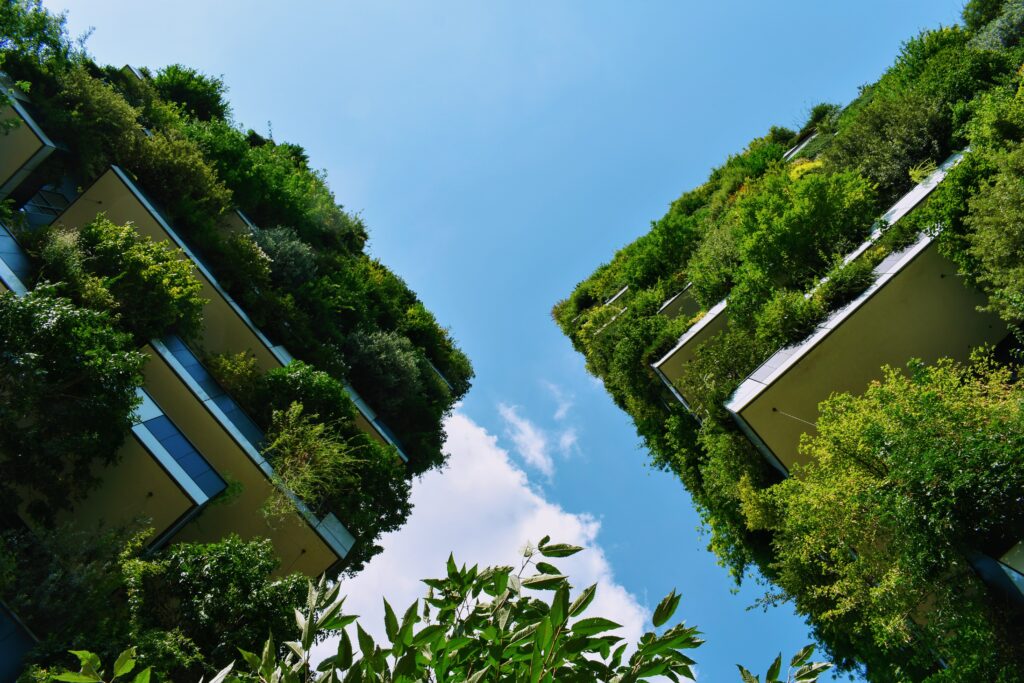Making cities more sustainable: 7 innovative ideas
Sustainability is essential to our future. It’s not enough to just talk about it, we all need to do our part to support and participate in sustainable projects to have a positive impact on our future. Just like drips of water that slowly fill a bucket, everything we do as individuals and as a society slowly adds up to make our world a better place for us and future generations.
When talking about sustainability across the product lifecycle, most experts focus on the beginning and end of the lifecycle. In other words, the design and development stage, where experts ensure that products can be easily repaired and don’t include planned obsolescence, and the end of life, where the focus is on ensuring the product can be re-used or easily broken up into individual components for recycling.
At Suivo, we focus on optimizing the usage of products, so our customers know exactly which assets they have, where they are located and their condition. Our smart, digital asset management solutions help our customers to track and maintain their assets and materials. This helps our customers to optimize the usage of their assets for more sustainable, future-proof projects for a wide range of industries, including construction.
We recently read an interesting article from the World Economic Forum about innovative projects that are making our cities more sustainable. We’d love to inspire some of our construction customers to develop more of these fantastic projects here in Belgium, so keep reading or head to the World Economic Forum for the full article.
7 innovative ways to make cities more sustainable
1. Sponge cities
As you look around cities, you will notice an increasing amount of urbanization. More concrete and buildings. Less open areas and plants. Combine this with higher levels of flooding (a consequence of global warming according to scientists) and the results can be disastrous.
The answer could be sponge cities. It might sound like a strange name, but it’s actually a good description of what it does. A sponge city uses different natural methods to naturally detain and filter water, alleviating waterlogging. The harvested rainwater can also be repurposed for irrigation and home use, as a type of sustainable drainage system. Natural methods include adding green space and vegetation to the city. Successful pilot projects have been implemented in China and Singapore.
2. Vertical forests
When there isn’t enough ground space for the amount of people living in a city, then you need to build up, resulting in vertical cities, also known as residential skyscrapers. Vertical forests take this a step further.
Trees, shrubs and other plants cover the outside of the tower work together to absorb carbon dioxide to reduce air pollution to improve air quality for city residents. The plants also keep temperatures cool indoors as well as filtering out fine dust particles and noise from the traffic passing on the streets below.
In 2014, architect Stefano Boeri, realized the first Vertical Forest in Milan, Italy. Spread over two towers, the Bosco Verticale (or ‘Vertical Forest’ has over 100 apartments, 800 trees, 4,500 shrubs and 15,000 plants. Other vertical forests can be found, or are being planned, in China, the Netherlands, and Switzerland.
3. The 20-minute neighbourhood
Imagine not needing to use a car to do your errands. Imagine walking or cycling everywhere you need to be. Imagine a 20-minute neighbourhood.
For residents of some cities, this is no longer a dream, but a reality. Cities like Melbourne, Australia, are improving the liveability of their citiesby giving people the ability to meet their daily needs within a 20-minute walk of their home. This includes shops, business services, education and leisure facilities.
To achieve this, cities are establishing a wider range of affordable and diverse housing types, building safe cycling networks, providing better open spaces, recreation facilities and playgrounds, improving public transport, an densuring local lifelong learning opportunities.
4. … or should it be a 15-minute-neighbourhood?
Taking the 20-minute neighbourhood a step further, is the idea to create 15-minute neighbourhoods in various cities around the world. In fact, the mayor of Paris, France, plans to turn the whole of Paris into 15-minute neighbourhoods, with similar suggestions being made in Ottawa, Canada, and Boulder, USA.
5. Miniature urban forests
Compact. Biodiverse. Eco-friendly. What’s not to love about miniature urban forests?
Increasingly spotted in cities around the world, miniature urban forests (also known as Miyawaki forests) can flourish on plots of land as small as a tennis court. These self-sustainable and resilient ecosystems usually contain a huge variety of native vegetation and can help fight climate change.
Miniature urban forests can be found in Belgium, France, the Netherlands, and India.
6. Green train tracks
As transport needs change, some railway tracks fall into disuse, taking up valuable space in the city but not adding anything positive to the lives of residents. Some cities take a different view of these spaces and have started to convert them into public spaces.
One of the first green train tracks was New York City’s iconic HighLine, an elevated pedestrian walkway and park built on an abandoned rail line. Other cities have followed, including the Phra Pok Klao Sky Park in Bangkok,Thailand, the Rail Park in Philadelphia, USA, Baana in Helsinki, Finland, and Park Spoor Noord in Antwerp, Belgium
It should be noted that it’s not just rail tracks that are being converted into green spaces. To give just one example, over 24,000 plants are being used to convert an old overpass in Seoul, South Korea, into a huge pedestrian walkway that weaves through the centre of the city.
7. Smarter commuting
Commuting is often time-consuming and frustrating, but this could bechanging thanks to a new app that is currently being tested in a pilot programme Israel. Simply by entering their location and destination, users can experience faster, cleaner and more convenient commutes as the app reroutes public transport to accommodate these requests.
While the app was originally implemented as part of the fight against COVID-19, it could be implemented permanently, potentially saving $25 million a year.
Digital asset management support our construction customers
Feeling inspired to help make your local city more sustainable? Contact Suivo to discover how our asset management solutions can help your construction projects.






